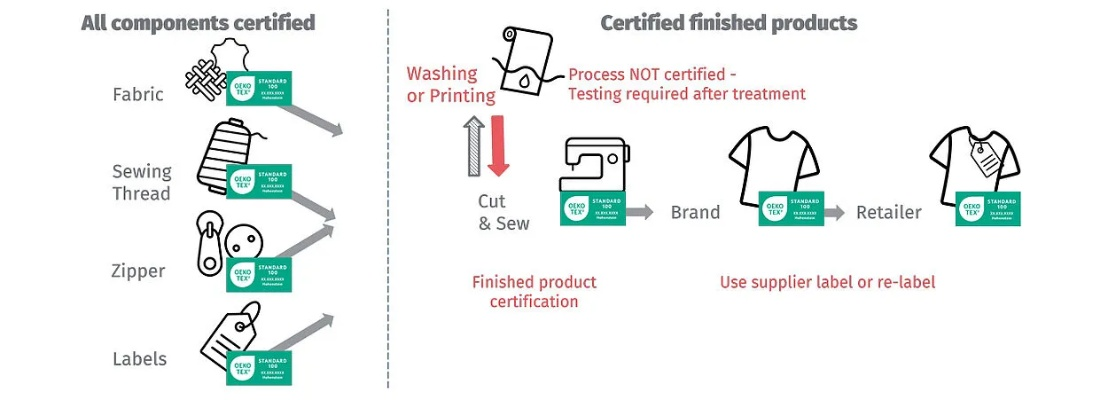The Ultimate Guide to Textile Testing Essentials
This guide aims to provide essential knowledge on textile testing. It covers a broad range of topics, including the basic principles behind textile testing, common types of tests used for assessing quality and performance, as well as the importance of proper testing procedures in ensuring product safety and compliance with regulatory standards. Additionally, it includes tips on how to choose the right testing equipment and techniques, as well as troubleshooting common issues that may arise during testing. Overall, this guide is designed to empower textile professionals to confidently conduct effective testing and ensure the quality and safety of their products.
Introduction: Textile testing is a crucial aspect of the textile industry, as it ensures the quality and performance of products. In this guide, we will delve into the essential aspects of textile testing, including the different types of tests, their applications, and the tools and equipment required for successful testing. Additionally, we will provide some practical examples that illustrate how these tests can be applied in real-world scenarios.
Types of Textile Tests: Textile testing encompasses a wide range of tests aimed at evaluating various properties of textile materials. Here are some of the most common types of tests:
-
Tensile Testing: This test measures the strength and resilience of textile materials under tension. It is used to determine the breaking strength, elongation, and other relevant parameters.
-
Tear Testing: This test evaluates the ability of textile materials to resist tearing or pulling apart. It is commonly used to assess the durability and resistance of fabrics.

-
Burst Testing: This test measures the burst pressure of textile materials, which is the force required to rupture them under pressure. It is useful for determining the burst resistance of fabrics.
-
Shrinkage Testing: This test measures the degree to which textile materials shrink when subjected to heat or moisture. It is important for assessing the stability and consistency of fabrics.
-
Color Testing: This test evaluates the color and shade of textile materials. It is used to ensure that colors meet specific standards and preferences.
-
Flammability Testing: This test measures the rate at which textile materials burn or catch fire. It is crucial for assessing the safety and flammability of fabrics.
-
Dyestuff Testing: This test evaluates the effectiveness of dyes and pigments in textile materials. It is used to ensure that colors are consistent and vibrant.
Applications of Textile Testing: Textile testing is not only essential for ensuring product quality but also plays a vital role in product development and marketing. Here are some examples of how textile testing can be applied in real-world scenarios:
-
Consumer Product Development: Textile companies often conduct testing on fabrics before they are mass-produced. This helps them identify any flaws or issues early on, allowing for timely adjustments and improvements.

-
Manufacturing Process Optimization: Textile companies use testing to optimize their manufacturing processes. For example, they may use tensile testing to determine the optimal tension settings for knitting or weaving machines.
-
Market Research: Textile companies use testing to gather data on consumer preferences and market trends. This information helps them develop new products and strategies to meet changing demands.
-
Regulatory Compliance: Textile companies must comply with various regulatory standards, such as Oeko-Tex Standard 100 for clothing and footwear. These standards require regular testing to ensure that products meet these requirements.
Tools and Equipment for Textile Testing: To conduct effective textile testing, companies need the right tools and equipment. Here are some commonly used tools and equipment for textile testing:
-
Tensile Testing Machines: These machines measure the strength and resilience of textile materials under tension. They come in various sizes and configurations depending on the specific needs of the company.
-
Tear Testing Machines: These machines measure the ability of textile materials to resist tearing or pulling apart. They are commonly used for assessing the durability and resistance of fabrics.
-
Burst Testing Machines: These machines measure the burst pressure of textile materials, which is the force required to rupture them under pressure. They are useful for determining the burst resistance of fabrics.

-
Shrinkage Testing Machines: These machines measure the degree to which textile materials shrink when subjected to heat or moisture. They are important for assessing the stability and consistency of fabrics.
-
Color Testing Machines: These machines evaluate the color and shade of textile materials. They are used to ensure that colors meet specific standards and preferences.
-
Flammability Testing Machines: These machines measure the rate at which textile materials burn or catch fire. They are crucial for assessing the safety and flammability of fabrics.
-
Dyestuff Testing Machines: These machines evaluate the effectiveness of dyes and pigments in textile materials. They are used to ensure that colors are consistent and vibrant.
Case Study: One example of how textile testing can be applied in real-world scenarios is the case of a textile company that produces high-quality sportswear. To ensure that their products meet the highest standards, the company conducts regular testing on fabrics before they are mass-produced. They use tensile testing machines to measure the strength and resilience of the fabrics, while tear testing machines are used to assess their durability and resistance to tearing. By following these testing protocols, the company can identify any flaws or issues early on and make necessary adjustments, ultimately leading to improved product quality and customer satisfaction.
Conclusion: In conclusion, textile testing is an essential aspect of the textile industry, as it ensures the quality and performance of products. Through understanding the different types of tests and their applications, companies can optimize their manufacturing processes, comply with regulatory standards, and meet consumer preferences effectively. By using the right tools and equipment, companies can conduct effective textile testing and ensure that their products meet the highest standards possible.
Articles related to the knowledge points of this article:
The Story of Xiangshans New Textile Wholesale in the西安市新城区瑞兴纺织品批发部
The Future of Fashion:Transforming Plastics into Superior Textiles



